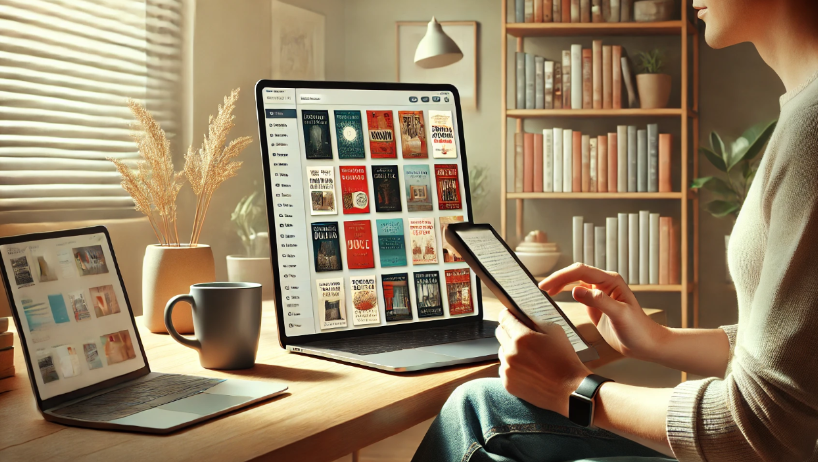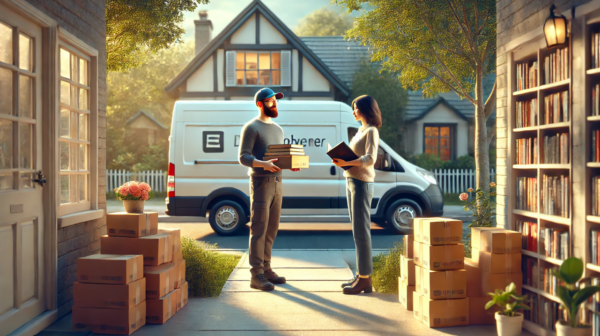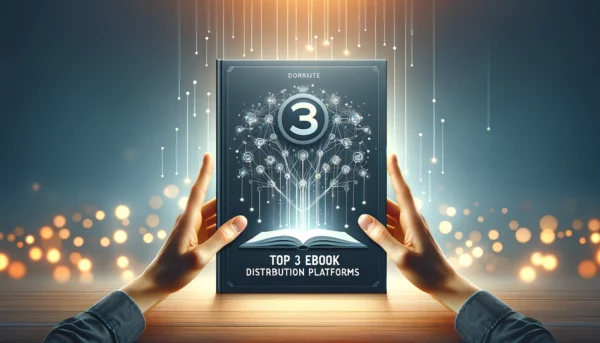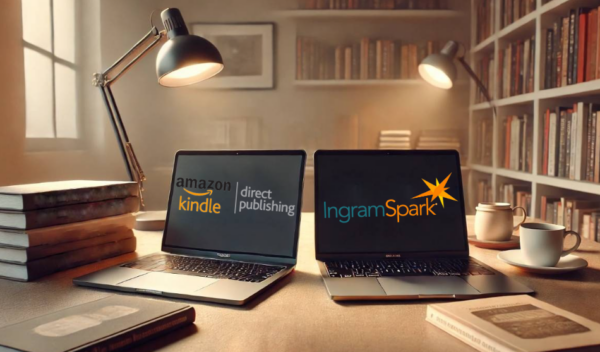Imagine this: You’re lounging on your couch, scrolling through your phone, and within seconds, you’ve bought a new book and started reading without ever leaving your house. That’s the magic of digital book distribution. Gone are the days of running to the bookstore just to find they’re sold out of the latest bestseller (we’ve all been there). Now, whether you’re in New York or nestled in a small village in Southeast Asia, the literary world is at your fingertips.
But while digital books are winning readers over with their convenience and instant gratification, traditional book sales aren’t waving the white flag just yet. There’s still something special about holding a physical book, the smell of the pages, and that sense of accomplishment when you close the cover after finishing the last chapter.
In this article, we’ll explore how digital book distribution has changed the game for authors and readers alike, and what this means for those beloved paperbacks on your bookshelf. Spoiler alert: Both formats have a place in our reading lives.
Digital Book Distribution: Changing the Game
Let’s be honest—digital book distribution has flipped the entire publishing world upside down, and if you’re an author or a reader, you’ve probably felt the shift. Think about it: Just a decade ago, you’d either need to convince a big publisher to take a chance on you or pray that your local bookstore carried your favorite niche title. Today? You can publish a book from your living room and have it available to millions of readers across the globe by dinner time.
For authors, this is a dream come true. Platforms like Kindle Direct Publishing (KDP), Apple Books, and Barnes & Noble have created an opportunity for writers to bypass the traditional gatekeepers and reach readers directly. And for those of us who love a good deal (who doesn’t?), digital books often come with lower price tags, thanks to the reduced cost of printing and shipping. So, not only do authors make more money, but readers get more books for less. It’s a win-win.
But let’s not forget the power of global reach. Before digital distribution, if you were a writer in, say, Poland, the chances of your book reaching readers in South Korea or Latin America were slim. Now? Distribution channels are so wide-reaching, your book could be in the hands of someone on the other side of the world with just one click. Pretty wild, right?
This isn’t just about selling more books—it’s about expanding your audience and connecting with readers you might never have reached otherwise. Digital book distribution has made the world a whole lot smaller, and for authors, that means more opportunities than ever before.
Ebook Distribution Platforms: The New Marketplace
Let’s dive deeper into the heart of this whole business transformation: ebook distribution platforms. If you’ve ever dreamed of getting your book in front of readers without waiting for months of traditional publishing headaches, this is where it gets exciting. Platforms like Amazon’s Kindle Direct Publishing (KDP), Apple Books, and Barnes & Noble Press have become the go-to marketplace for authors looking to self-publish, and for good reason.
These platforms are like your personal bookstore—except they’re open 24/7 and can reach readers across the globe. If you’re an author, you no longer need to worry about printing costs, warehouse storage, or shipping logistics. Just upload your manuscript, set your price, and voilà—your book is available in seconds. And let’s face it, who doesn’t love the instant gratification of seeing their book live on a platform that millions of readers use daily?
Your Publishing Journey Awaits – Start NowAnd What About Royalties?
But here’s the best part of self publishing though: royalties. With traditional publishing, authors often see only a small fraction of the profits from their hard work. Ebook distribution platforms flip that on its head, offering much higher royalty rates—up to 70% in some cases. That means more of the revenue stays in your pocket, and who wouldn’t want that?
These platforms also offer promotional tools that make marketing easier. Whether it’s running a “free book” promotion to boost visibility or using targeted ads to reach specific reader demographics, ebook platforms give you a suite of tools to help your book stand out in a crowded marketplace. And don’t forget about the global reach—your book can be read in countries you’ve never even visited!
Whether you’re a first-time author or a seasoned pro, ebook distribution platforms have leveled the playing field, allowing everyone to have a shot at publishing success. It’s no wonder more and more authors are turning to these platforms as their primary path to publication.
Spines: Streamlining Global Book Distribution
If you’re an author looking to simplify your publishing journey, Spines (formerly BooxAI) might just be the game changer you need. Founded in 2020, Spines has taken the world of book distribution by storm, offering a hybrid model of self publishing service that blends AI technology with human expertise to make publishing faster, more affordable, and far more efficient than traditional methods.
Here’s where Spines really shines: global distribution. As an author, getting your book into the hands of readers around the world is a dream. With Spines, that dream becomes a reality. Whether it’s an eBook, audiobook, or print-on-demand copy, Spines ensures your work reaches major platforms like Amazon, Barnes & Noble, and countless others across multiple regions. In under 30 days, your book can be available to millions of readers, bypassing the long wait times of traditional publishing.
Even better, Spines offers authors full control through an intuitive dashboard that handles everything from proofreading to formatting and cover design. The platform’s AI tools allow authors to publish seamlessly without the headaches of coordinating multiple services, all while retaining 100% of their royalties—yes, you read that right.
By leveraging the power of technology, Spines makes global distribution more accessible, faster, and easier for authors, whether you’re publishing your first book or adding to a growing catalog. If you’re serious about reaching readers worldwide, Spines is designed to make that happen without breaking the bank.
Subscription Services: A New Way to Read
Let’s talk about subscription services—one of the biggest shifts in how readers access books today. With platforms like Kindle Unlimited, Scribd, and Apple Books subscription services, readers pay a monthly fee and gain access to a huge library of titles. It’s like Netflix for books, and for avid readers, it’s a dream come true.
From an author’s perspective, the rise of subscription models offers both opportunities and challenges. On the one hand, services like Kindle Unlimited allow your book to reach more readers, especially those who might not want to commit to buying individual titles. More readers means more chances for your book to gain traction and spread by word of mouth. And who doesn’t want their work in the hands of more people?
However, the trade-off is that while your book is being read, you’re not necessarily making big bucks per download. Instead of traditional royalty payments per sale, subscription services operate on a revenue-sharing model, which means you’re only paid monthly based on how much of your book gets read. So, the more compelling your book is, the more pages readers will flip through, and the more you earn.
But here’s the kicker—subscription services are still growing, and their user base is expanding around the world. For authors, this means that while per-book royalties may be lower, the sheer volume of readers you can reach through these platforms can make up for it. Plus, having your book in a service that reaches millions of readers opens up possibilities that might not have existed with traditional distribution alone.
In short, while subscription services may not replace the traditional sales model, they are certainly a powerful tool to expand your audience and boost your book’s visibility in today’s digital age.
Ebook Distribution and Traditional Book Sales: Competition or Synergy?
Now, let’s address the elephant in the room: Are ebooks stealing the spotlight from traditional book sales, or is there room for both to thrive? The rise of digital distribution has undoubtedly shifted the landscape, but it’s not as simple as one format replacing the other. In fact, in many ways, ebooks and traditional book sales are complementing each other.
Here’s the thing: while ebook distribution has exploded in popularity—thanks to its convenience, lower costs, and instant access—there’s still a strong market for physical books. Many readers, especially collectors and those who appreciate the tactile experience of turning a page, still prefer physical books. Data shows that even with the rise of digital formats, physical book sales remain steady, with hardcover and print-on-demand options holding their ground.
For authors, this means you don’t have to choose between one format or the other. In fact, offering both digital and physical versions of your book gives readers the choice that best fits their preferences. Some readers might buy your ebook for convenience, while others will opt for a print copy to keep on their bookshelf or give as a gift. When done right, having both formats can actually drive sales across the board.
Your Publishing Journey Awaits – Start NowWhat’s more, digital distribution allows authors and publishers to experiment with different strategies. You could launch an ebook first to build buzz and then follow up with a physical release, or you could offer special print editions for fans who want something tangible. Digital and traditional sales don’t have to compete—they can work together to boost your overall reach and profitability.
In essence, the real power lies in combining the best of both worlds: leveraging the speed and global reach of the ebook distribution platform, while still catering to those who cherish the charm of a physical book. This synergy is transforming the publishing industry, opening up new possibilities for authors everywhere.
Distribution Channels: Expanding Reach Through Digital and Physical Integration
In today’s publishing landscape, authors have more options than ever when it comes to reaching readers, and it’s not just limited to digital platforms. While ebook distribution channels have certainly widened the audience pool, combining digital with physical distribution can supercharge your book’s reach. It’s all about offering your book in multiple formats across various channels to ensure you’re meeting readers wherever they are.
Think of it this way: digital platforms like Amazon Kindle, Apple Books, and Barnes & Noble can instantly connect your book to millions of readers worldwide. But don’t forget about the power of physical distribution. Whether it’s print-on-demand through major online retailers or having your book stocked in public libraries, the combination of digital and physical channels creates a broader presence. For example, print-on-demand services let you make your book available as a paperback or hardcover without the hassle of inventory, while still reaching readers who prefer a physical copy.
Many successful authors leverage both digital and physical formats to maximize exposure. Having your book available in public libraries or listed in academic papers adds a layer of credibility and visibility that purely digital distribution might not achieve. Libraries are increasingly embracing digital formats too, offering ebooks alongside their physical collections, so being present in both spaces ensures that no reader is left out.
For self-published authors, this dual distribution strategy is key. Platforms like Spines take care of all these distribution channels, making it easy to have your ebook, print-on-demand copy, and even audiobook available across major retailers, stores, and libraries. This multi-channel approach ensures that wherever a reader prefers to find their next book—whether it’s online, in a bookstore, or on a library shelf—your title is there, waiting for them.
Ultimately, using a combination of digital and physical distribution channels expands your reach and keeps your book accessible to a wide range of audiences, giving you the best chance to succeed in today’s diverse publishing environment.
The Future of Digital Distribution and Traditional Sales
So, what does the future hold for digital ebook distribution services and traditional book sales? The answer lies in a balance between the two, as both formats continue to evolve and cater to different reader preferences. While ebooks and audiobooks are clearly on the rise, physical books aren’t going anywhere anytime soon.
Ebooks and audiobooks offer undeniable convenience. They can be downloaded instantly, stored in vast quantities on a single device, and are often more affordable for readers. For busy readers or those who prefer the hands-free experience of listening, audiobooks provide a whole new way to consume content. The future will likely see even more advancements in these formats—perhaps new technologies that make reading on digital devices even more immersive or AI-powered audiobooks that provide personalized narration.
But physical books still hold a special place in readers’ hearts. Many people love the feel of a book in their hands, the smell of the pages, and the satisfaction of flipping through real paper. This emotional connection means that while digital formats grow, print books will remain a cherished part of the reading experience. In fact, the future of book sales will likely see digital and physical formats complementing each other, allowing authors to reach readers across different platforms.
Looking ahead, authors who embrace both digital distribution and traditional sales will have the advantage. By offering ebooks, audiobooks, and print copies, you can meet readers where they are and provide multiple entry points into your story. And as technology continues to improve, expect even more opportunities to expand your reach, whether through new distribution channels, global markets, or innovative marketing tools.
In the end, the future of publishing isn’t about choosing between digital or traditional—it’s about embracing both to ensure that your book has the widest possible audience and the best chance to succeed in an ever-changing landscape.
Bringing It All Together: The Best of Both Worlds
At the end of the day, whether your book is flying off the digital shelves or being thumbed through by someone in a cozy corner of their favorite bookstore, the goal is the same: to reach readers and share your story. Digital book distribution has opened doors that traditional publishing alone couldn’t have imagined, offering authors the chance to connect with a global audience faster and more efficiently than ever before. But that doesn’t mean the charm of a physical book has been lost—it just means we now have more ways to engage with readers.
If you’re an author, the key takeaway is this: you don’t have to choose between digital and traditional. In fact, embracing both gives your book the best shot at success. Whether you’re using an ebook platform to launch your story to millions or offering a print-on-demand version for readers who still love the smell of a freshly printed page, the options are endless.
So, why limit yourself? The world of publishing is evolving, and with platforms like Spines leading the charge, you have the tools to get your book into the hands (or onto the screens) of readers everywhere. Go ahead, share your story with the world—you’ve got more ways to do it than ever before, and the world is ready to read it.
Your Publishing Journey Awaits – Start Now





